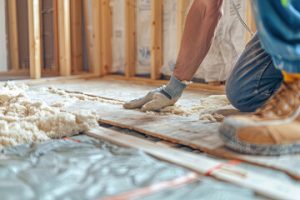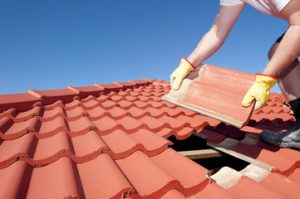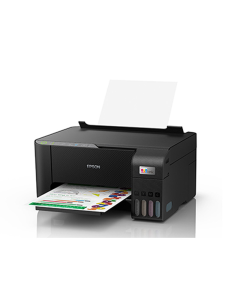Commercial businesses rely on electrical systems to power equipment and lights. Quality electrical services are vital to ensuring that business operations run smoothly and safely.
Commercial Electrical Service is skilled at installing lighting and data cabling in a variety of settings. They also inspect wiring and other components to ensure safety and compliance with codes.

A reliable and efficient electrical system is essential for the smooth running of any business. It powers machinery and lights up spaces, allowing employees to work efficiently and customers to enjoy a positive experience. Without it, a business would grind to a halt. That’s why it’s crucial to have a commercial electric service provider that can provide high-quality services to meet all of your needs.
Electricians are responsible for a wide range of tasks related to maintaining and installing commercial and industrial electricity systems. In addition, they are often charged with helping businesses prioritize sustainability and energy efficiency in their day-to-day operations. As such, the types of projects they perform vary widely between industries.
One common type of project for commercial electric service providers is new construction electrical installation. This involves setting up electrical systems in new buildings, including lighting, power distribution, and specialized systems. It can also include circuit breaker and electrical panel upgrades, which help to improve the overall capacity of the system to handle more load demands.
Other common commercial electrical services include installing and maintaining security systems and fire alarms. These ensure the safety of the building’s occupants by helping to detect any potential issues and quickly address them. They can also install structured cabling systems, which are used for transmitting data, voice, and video across devices in offices and other commercial spaces.
Other services that commercial electrical contractors may offer include testing and commissioning, which involves ensuring that the electrical system is functioning properly and safely. They can also perform routine inspections to identify any potential problems and ensure compliance with local codes. Finally, many commercial electric services companies also offer emergency repair services, which can be critical if your business experiences an outage or other problem that affects productivity and safety.
Safety and Compliance
Commercial properties depend on a complex network of electrical systems to power equipment, lights, and other devices. Keeping these systems functioning at their best is critical to the success of any business. But maintaining these systems requires professional service and expert expertise to avoid expensive disruptions.
Whether your business needs a new wiring upgrade, a faulty circuit breaker, or other electrical services, you should choose a professional commercial electrical contractor who prioritizes safety and compliance. A commitment to safety and compliance ensures that your electrical systems meet industry standards and minimizes the risk of fires, injuries, and other hazards.
Effective planning and design are the cornerstones of a safe and efficient electrical system. This begins with an initial consultation and site assessment to understand your specific electrical requirements. Once these details are understood, an experienced electrical engineer can design a custom plan that meets your business’s power demands and adheres to local codes and regulations.
Another important consideration is ensuring that your electrical systems are properly grounded and bonded. This helps prevent injuries due to shock and minimizes the risk of power outages. Proper grounding also improves the longevity of your electrical systems by reducing wear and tear.
Employee training and safety protocols are also essential to workplace safety. It is vital to train employees on identifying and mitigating electrical hazards, proper lockout/tagout procedures, and emergency response protocols. This can help reduce accidents and create a more productive work environment.
Electrical inspections are also an important part of a comprehensive electrical safety program. They can help identify potential hazards and issues, including overloaded circuits, faulty wiring, and improper grounding. Regular inspections can also uncover energy-saving opportunities, such as upgrading lighting to LED technology or implementing energy-efficient power distribution systems.
By prioritizing electrical code compliance, working with reputable commercial electrical services providers, and building a culture of safety in the workplace, you can minimize risks, protect your business against electrical hazards, and ensure a secure work environment for your employees and customers. Contact us today to learn more about how our services can help you maintain the integrity and reliability of your electrical systems.
Reliable Service
One of the most important aspects of quality commercial electrical service is reliable service. Electrical systems are the backbone of business operations, and any problems or failures could have a significant impact on efficiency and productivity. A professional electrician can diagnose and repair any issues, minimizing downtime and ensuring that all equipment is functioning properly.
Another essential aspect of quality commercial electrical services is meeting all applicable safety and compliance standards. The electrical systems in commercial properties are often more complex than those in residential structures, and they require a higher voltage level to accommodate industrial-grade equipment and machinery. A professional can ensure that all wiring and systems are up to code, protecting employees and customers from potential dangers.
Commercial electrical services can also provide backup power solutions, improving operational stability and minimizing downtime in the event of an emergency. This can include a variety of technologies, such as uninterruptible power supplies (UPS) and generators. These solutions can help businesses continue operating even in the face of a power outage or other disruption, and they can improve energy efficiency by reducing unnecessary consumption.
Lastly, commercial electric services can assist with the installation of data cabling and communication networks, which are necessary for modern businesses to function effectively. This includes installing and configuring the infrastructure for Ethernet cables, voice over IP phones, and other technologies. This helps businesses maintain communications with employees and customers, enabling them to work remotely and communicate with colleagues in real-time.
Aside from implementing new electrical systems in commercial buildings, these services can also provide maintenance and repairs for existing ones. They can inspect wiring, replace outdated components, and address any other problems with an electrical system. Electricians can also install and maintain lighting systems, including specialized task lighting and energy-efficient solutions. They can also upgrade and improve switchgear, electrical panels, and transformers to increase power efficiency and handle increased load demands.
While many electrical contractors can offer services for both residential and commercial properties, it’s important to find a company that specializes in commercial projects. Look for a contractor with experience in commercial installations, and make sure to review their portfolio and past projects to assess their capabilities. You should also ask for customer testimonials and reviews to gauge their reputation and reliability.
Affordable
A reliable, efficient electrical system is essential to any business. It powers machinery, illuminates workspaces, and ensures that everything runs smoothly. However, commercial electrical services can be expensive, and it is important to balance cost with safety and efficiency. Choosing the right commercial electricians and opting for regular inspections can help you minimize your energy costs and maximize your productivity.
Electrical work is a complex and dangerous task, so it is always best to leave it to the professionals. A licensed commercial electrician can provide you with a wide range of services, including:
New Construction Electrical Installation
One of the most common requests for commercial electrical services is to install wiring in new commercial buildings. These projects typically include a variety of systems, such as power distribution, lighting, security systems, and specialized equipment. A qualified commercial electrician can set up these systems in a timely manner to ensure that your business has the electricity it needs for day-to-day operations.
Electricians can also help with upgrades and expansions to existing electrical systems. This can involve upgrading outdated circuit breakers, increasing system capacity, or integrating new technologies. They can even perform routine maintenance on electrical systems, which can help prevent problems and save you money in the long run.
In addition to the services listed above, commercial electrical contractors can handle a variety of other tasks related to business electrical needs. For example, they can install backup generators and emergency lighting systems to ensure that your business has the power it needs during an outage. They can also inspect and test all types of electrical equipment and components to ensure compliance with local codes and regulations.
If you need commercial electrical services, it is essential to find a contractor that offers affordable service and has the necessary qualifications and experience. Look for a company with a history of successful projects and references from previous customers. It is also helpful to check their credentials, such as licenses and insurance, to ensure they are a reputable and trustworthy company. Choosing the right commercial electrical service provider can make all the difference in your business’s productivity and success.








